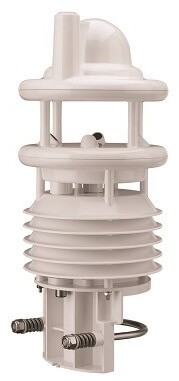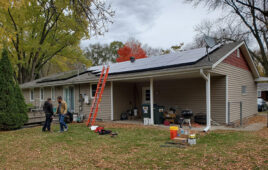
The WS800 is the latest product in the Lufft weather-sensor family and can detect lightning strikes.
Lightning strikes can cause dangerous fires and lead to significant financial losses in the case of surge damage. This is especially true for wind turbines, solar panels, and smart grids, but it’s also relevant to building and power-plant insurance. The latest compact weather sensor from Lufft is providing a new form of lightning detection to help protect critical equipment and facilities.
The WS800 is the latest product in the Lufft weather-sensor family, and it’s from measurement technology producer Fellbach. The WS800 can pinpoint the precise location and time when lightning struck and reconstruct an event. The device also detects many other environmental parameters relevant to the monitoring of power plants, buildings, or outdoor areas such as forest stocks.
Optically, there is no difference from Lufft’s WS700 all-in-one weather sensor, which has been available since September 2014. This is because the WS800 lighting detector is small enough to fit into the existing housing of the WS700-UMB.
The WS800 also covers the same environmental parameters as the earlier model with the addition of detecting lightning events. These features include ambient temperature, relative humidity, barometric pressure, wind speed and direction, rainfall intensity and volume, as well as global radiation. In a sense, eight individual sensors are packed into a smart, all-in-one device.
A single cable suffices when connecting to a new or existing measurement network. This saves customers valuable time during installation and maintenance. The innovative environmental sensor communicates with the standard protocols UMB-ASCII, UMB-Binary, SDI-12 and MOD-BUS, and with analog outputs in combination with the DACON converter — making it easy to integrate into new and existing measurement networks.
The WS800 works by detecting the radiated electromagnetic waves of a thunderbolt. By way of appropriate algorithms and filters, it can reliably detect the lightning discharges. Extensive tests with lighting simulators were performed by Lufft engineers in the laboratory and in the field. These tests confirmed the sensor’s resistance against electromagnetic radiation.
Lufft
http://lufft.com





Tell Us What You Think!